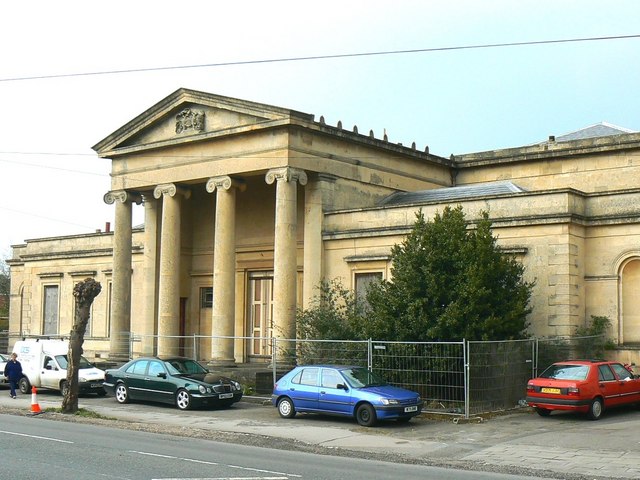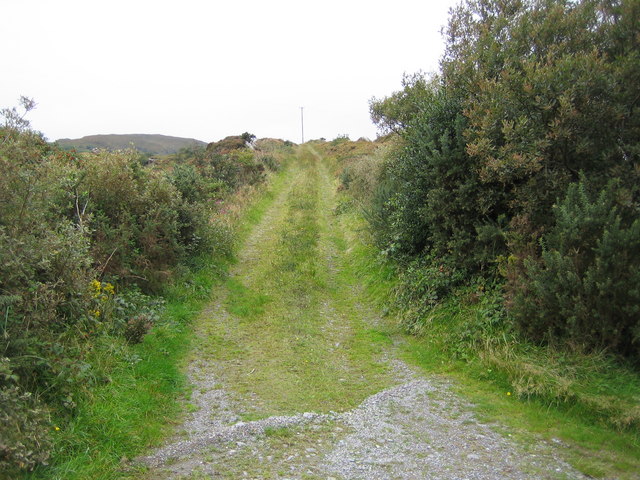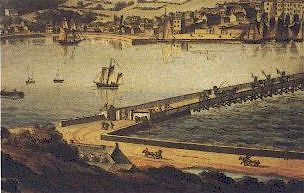|
The Carrickshock Incident
The Carrickshock incident, Carrickshock massacre, or battle of Carrickshock was a confrontation between the Irish Constabulary and local Catholic tenant farmers near Carrickshock, near Hugginstown, County Kilkenny on 14 December 1831, during the Tithe War in Ireland. Seventeen were killed: 14 of a party attempting to collect tithes and three of the crowd of locals who confronted them. The incident was unusual among massacres in the Tithe War in that the majority of casualties were supporters rather than opponents of tithes. Background In Ireland from 1830, beginning in Kilkenny, Roman Catholic tenant farmers began withholding the tithes they were obliged to pay to the vicar of the local Church of Ireland parish. Dr. Hans Hamilton was rector of Knocktopher, a union of five parishes: Knocktopher, Aghaviller, Kilmoganny, Dunnamaggin, and Derrynahinch. and in January 1831 he refused the request of a delegation of tenants to reduce their tithe rate. In March Hamilton began legal proce ... [...More Info...] [...Related Items...] OR: [Wikipedia] [Google] [Baidu] |
Tithe War
The Tithe War ( ga, Cogadh na nDeachúna) was a campaign of mainly nonviolent civil disobedience, punctuated by sporadic violent episodes, in Ireland between 1830 and 1836 in reaction to the enforcement of tithes on the Roman Catholic majority for the upkeep of the established state church, the Church of Ireland. Tithes were payable in cash or kind and payment was compulsory, irrespective of an individual's religious adherence. Background Tithe payment was an obligation on those working the land to pay ten per cent of the value of certain types of agricultural produce for the upkeep of the clergy and maintenance of the assets of the church. After the Reformation in Ireland of the 16th century, the assets of the church were allocated by King Henry VIII to the new established church. The majority of the population in Ireland who continued to adhere to Catholicism were then obliged to make tithe payments which were directed away from their own church to the reformed one. This incr ... [...More Info...] [...Related Items...] OR: [Wikipedia] [Google] [Baidu] |
Land Agent
Land agent may be used in at least three different contexts. Traditionally, a land agent was a managerial employee who conducted the business affairs of a large estate (house), landed estate for a member of the landed gentry, supervising the farming of the property by farm labourers and/or tenants and collecting rents or other payments. In this context a land agent was a relatively privileged position and was a senior member of the estate's staff. The older term, which continued to be used on some estates, was Steward (office), steward, and in Scotland a land agent was usually referred to as a Factor (Scotland), factor. Today the term estate manager or similar is more common. Other uses A land agent, also called a warrant agent, may also be a Real estate broker, real estate agent or broker who specialises in land and farm sales. Land and farm sales differ drastically from sales of houses, therefore there is the need for specialisation. This usage is found in the United Kingdom, A ... [...More Info...] [...Related Items...] OR: [Wikipedia] [Google] [Baidu] |
Hung Jury
A hung jury, also called a deadlocked jury, is a judicial jury that cannot agree upon a verdict after extended deliberation and is unable to reach the required unanimity or supermajority. Hung jury usually results in the case being tried again. This situation can occur only in common law legal systems, because civil law systems either do not use juries at all or provide that the defendant is immediately acquitted if the majority or supermajority required for conviction is not reached during a single, solemn vote. Australia Majority (or supermajority verdicts) are in force in South Australia, Tasmania, Western Australia, the Northern Territory, Victoria, New South Wales, and Queensland. Australian Capital Territory and Commonwealth courts require unanimous verdicts in criminal (but not civil) trials. Canada In Canada, the jury must reach a unanimous decision on criminal cases. If the jury cannot reach a unanimous decision, a hung jury is declared. A new panel of jurors will b ... [...More Info...] [...Related Items...] OR: [Wikipedia] [Google] [Baidu] |
Daniel O'Connell
Daniel O'Connell (I) ( ga, Dónall Ó Conaill; 6 August 1775 – 15 May 1847), hailed in his time as The Liberator, was the acknowledged political leader of Ireland's Roman Catholic majority in the first half of the 19th century. His mobilization of Catholic Ireland, down to the poorest class of tenant farmers, secured the final installment of Catholic emancipation in 1829 and allowed him to take a seat in the Parliament of the United Kingdom, United Kingdom Parliament to which he had been twice elected. At Palace of Westminster, Westminster, O'Connell championed liberal and reform causes (he was internationally renowned as an Abolitionism, abolitionist) but he failed in his declared objective for Ireland—the restoration of a separate Irish Parliament through the repeal of the Acts of Union 1800, 1800 Act of Union. Against the backdrop of a growing agrarian crisis and, in his final years, of the Great Famine (Ireland), Great Famine, O'Connell contended with dissension at home ... [...More Info...] [...Related Items...] OR: [Wikipedia] [Google] [Baidu] |
Assizes
The courts of assize, or assizes (), were periodic courts held around England and Wales until 1972, when together with the quarter sessions they were abolished by the Courts Act 1971 and replaced by a single permanent Crown Court. The assizes exercised both civil and criminal jurisdiction, though most of their work was on the criminal side. The assizes heard the most serious cases, which were committed to it by the quarter sessions (local county courts held four times per year), while the more minor offences were dealt with summarily by justices of the peace in petty sessions (also known as magistrates' courts). The word ''assize'' refers to the sittings or sessions (Old French ''assises'') of the judges, known as "justices of assize", who were judges who travelled across the seven circuits of England and Wales on commissions of "oyer and terminer", setting up court and summoning juries at the various assize towns. Etymology Middle English < |
Kilcurl
Kilcurl (historically ''Kylkeryl'' and ''Kilkirihill'' and ''Kirkirle''; ) comprises the two townland areas of Kilcurl Anglesey and Kilcurl Feronsby. The townlands are situated from its nearest village, Knocktopher, and located on a road to Carrickshock monument away and to Ballyhale. The village of Knocktopher is situated in the parish of Ballyhale, south County Kilkenny, in Ireland. Kilcurl is primarily an area of rich farmland, but is also of historical significance due to the presence of a castle at Kilcurl Feronsby, the Tithe War memorial at nearby Carrickshock, the ancient church and graveyard ruins at Kilcurl Anglesey, and an Ogham stone on adjoining lands with Ballyboodan. Its history has been established from extensive records, archives, local historians, recordings and international research. History Ancestry.com's Rootsweb references the very large number of historic castles of County Kilkenny including Kilcurl Castle, that number being due to a history dating back t ... [...More Info...] [...Related Items...] OR: [Wikipedia] [Google] [Baidu] |
Hurley (stick)
A hurley or hurl or hurling stick (Irish: ''camán'') is a wooden stick used in the Irish sports of hurling and camogie. It typically measures between 45 and 96 cm (18 to 38 inches) long with a flattened, curved ''bas'' ( , " palm of hand") at the end. The ''bas'' (which is less than 13 cm in width at its widest point) is used to strike a leather '' sliotar'' ball. Overview Hurleys are made from ash wood; the base of the tree near the root is the only part used and is usually bought from local craftsmen in Ireland (for about €20–50), who still use traditional production methods. However, for some time in the 1970s, hurleys made from plastic were used, mainly produced by Wavin. These proved more likely to cause injury, however, and were phased out. As of 2012, at least one manufacturer was producing synthetic hurleys approved for use by the GAA. On wooden hurleys, steel bands are used to reinforce the flattened end - though these are not permitted in camogie due ... [...More Info...] [...Related Items...] OR: [Wikipedia] [Google] [Baidu] |
Townland
A townland ( ga, baile fearainn; Ulster-Scots: ''toonlann'') is a small geographical division of land, historically and currently used in Ireland and in the Western Isles in Scotland, typically covering . The townland system is of Gaelic origin, pre-dating the Norman invasion, and most have names of Irish origin. However, some townland names and boundaries come from Norman manors, plantation divisions, or later creations of the Ordnance Survey.Connolly, S. J., ''The Oxford Companion to Irish History, page 577. Oxford University Press, 2002. ''Maxwell, Ian, ''How to Trace Your Irish Ancestors'', page 16. howtobooks, 2009. The total number of inhabited townlands in Ireland was 60,679 in 1911. The total number recognised by the Irish Place Names database as of 2014 was 61,098, including uninhabited townlands, mainly small islands. Background In Ireland a townland is generally the smallest administrative division of land, though a few large townlands are further divided into h ... [...More Info...] [...Related Items...] OR: [Wikipedia] [Google] [Baidu] |
Boreen
A boreen or bohereen ( ; ga, bóithrín , meaning 'a little road') is a country lane, or narrow, frequently unpaved, rural road in Ireland. "Boreen" also appears sometimes in names of minor urban roads such as Saint Mobhi Bóithrín ( ga, Bóithrín Mobhí, link=no), commonly known as Mobhi Boreen in Glasnevin, Dublin. To be considered a boreen the road or path should not be wide enough for two cars to pass and have grass growing in the middle. The word "boreen" comes from the Irish word ''bóithrín'', which in turn comes from ''bóthar''. In origin, a ''bóthar'' was a cow path, a track the width of two cows, so ''bóithrín'' meant a little cow path. Bóthar was one of the five types of road identified in medieval Irish legal texts, the others being ''slige'' (on which two chariots could pass), ''rót'' (on which one chariot and two riders could pass), ''lámraite'' (a road connecting two major roads) and ''tógraite'' (a road leading to a forest or a river). In parts of U ... [...More Info...] [...Related Items...] OR: [Wikipedia] [Google] [Baidu] |
Ballyhale
Ballyhale () is a village in the south east of Ireland. Located in the south of County Kilkenny, south of the city of Kilkenny and roughly halfway to Waterford city. The sport of hurling is popular in the area, and the local Gaelic Athletic Association team of Ballyhale Shamrocks are the most successful hurling club in All-Ireland Senior Club Hurling Championship history. Local Kilkenny GAA hurler Henry Shefflin holds the record for the highest number of All Ireland Senior Hurling medals for a single player. The location is also close to the Mount Juliet golf course in nearby Thomastown. The food brand Glanbia, originally Avonmore, had its roots in a number of member-owned creameries, before becoming a global showcase coop brand for Irish agriculture. Ballyhale is also home to Kiltorcan's Old Quarry. Ballyhale also played a historic role when, in 1832, approximately 200,000 people from four counties gathered in support of those on trial for the 1831 Battle of Carrickshock. T ... [...More Info...] [...Related Items...] OR: [Wikipedia] [Google] [Baidu] |
Wexford Rebellion
The Wexford Rebellion refers to the outbreak in County Wexford, Ireland in May 1798 of the Society of United Irishmen's rebellion against the British rule in Ireland, British rule. It was the most successful and most destructive of all the uprisings that occurred throughout Ireland during the Irish Rebellion of 1798, 1798 Rising, lasting from 27 May 1798 until about 21 June 1798. The Wexford Rebellion saw much success despite County Wexford not being thought of as an immediate threat by the government, because of the spontaneous risings that occurred both before and after the significant rebel victories in Oulart, Enniscorthy, and Wexford, Wexford town. First phase The County Wexford Society of United Irishmen had remained relatively intact during the repression that saw much of the organisation in other counties severely weakened. However, in May 1798, just as the Rising broke out in County Kildare, the British arrested Anthony Perry of Inch, County Wexford, Inch, an ex-milita ... [...More Info...] [...Related Items...] OR: [Wikipedia] [Google] [Baidu] |
.jpg)







